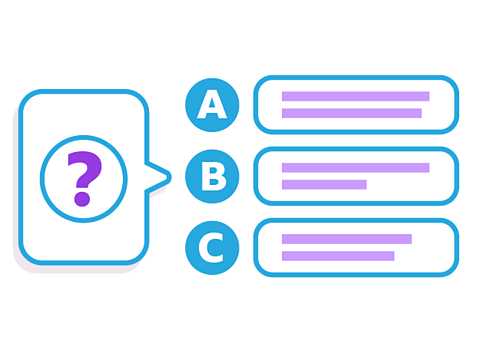Key points about when to use articles in Spanish

- Articles are sometimes used differently in Spanish and English.
- definite articleGoes before a noun and means the. In Spanish the definite article changes according to whether the noun is masculine, feminine, singular or plural. are used in Spanish with days of the week, generic nouns, body parts and personal items.
- indefinite articleA, an or some. They change depending on whether the noun it goes with is masculine, feminine, singular or plural. are not used in Spanish when talking about jobs and in front of certain specific words.
When to use the definite article in Spanish
Spanish uses the definite article in many situations where English doesn't, such as referring to days of the week, generic nouns and some body parts and personal items.
Days of the week
Days of the week typically are preceded by either el or los, depending on whether the day is singular or plural. All days of the week are masculine so it will always be el or los.
For example:
Voy a la tienda el jueves. - I'm going to the shop on Thursday.
Voy a la tienda los jueves. - I go to the shop on Thursdays.
Days of the week - Mini quiz

Fill in the blank with the correct form of the definite article to translate the sentence:
Voy al supermercado ____ viernes.
I go to the supermarket on Friday.
Voy al supermercado el viernes.
The definite article el is needed because viernes is a day of the week in the singular form. In Spanish, all days of the week are masculine.

Remember
The names of the weekdays don't change in the plural form although the article is plural.
Generic nouns
Generic nouns refer to a thing or idea in general terms. For example, a member of a class in general, rather than a specific person, where the article would be required in both languages.
Have a look at these examples:
Prefiero el libro. - I prefer the book.
El libro is a non-generic noun, as it referring to a specific book that the person prefers.
Prefiero el tenis. - I prefer tennis.
El tenis is a generic noun and the definite article el in a needed because it is talking about tennis in general.
Body parts and personal items
The definite article is used in Spanish in cases where a possessive adjective, for example my, your, his or her, would be used in English to refer to personal items including clothing and body parts.
For example:
Tengo los ojos azules. - I have blue eyes.
Los is used because ojos (eyes) is masculine and plural.
PerdiГі los zapatos. - He lost his shoes.
Los is used because zapatos (shoes) is masculine and plural.
When to leave out the indefinite article in Spanish
In some cases the article in Spanish is left out when it would be included in English.
Talking about the jobs people do
There’s no need to use the indefinite article when talking about jobs in Spanish.
For example:
Mi primo es profesor. - My cousin is a teacher
Me gustarГa ser mГ©dica. - I would like to be a doctor.
Talking about things where quantity isn’t important
The indefinite article is not needed when talking about things in a general way, especially if quantity is not important.
For example:
No tengo coche. - I don’t have a car.
ВїTienes novia? - Do you have a girlfriend?
In front of the words casa, cama, clase
The indefinite article is left out before certain common words.
When you are going to or you are physically located somewhere, such as at home or in class, the article is left out.
For example:
Estoy en casa. - I’m at home.
Tenemos que ir a clase. - We have to go to class.
If you are unwell and have to stay in bed, describe your time in bed without an article:
Javier estГЎ en cama con fiebre. - Javier's in bed with a fever.
After the verb tener in negative sentences
Articles are also left out after the verb tener (to have) in negative sentences.
For example:
No tengo dinero. - I don’t have any money.
No tiene amigos. - He doesn’t have any friends.
Quiz - Using articles
Practise what you've learned about using articles with this quiz.
Now you have learned about using articles in Spanish why not explore adverbs in Spanish?
More on Gender, nouns and articles
Find out more by working through a topic
- count1 of 4

- count2 of 4

- count3 of 4
